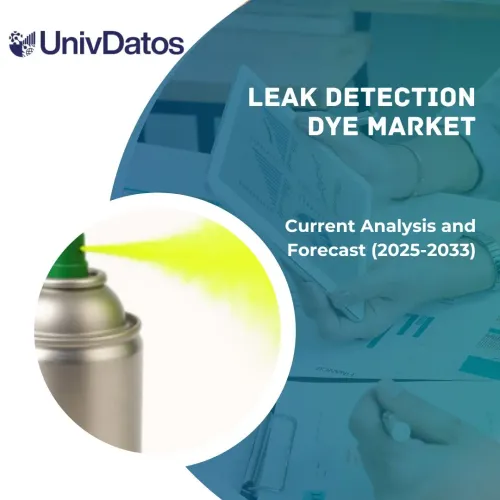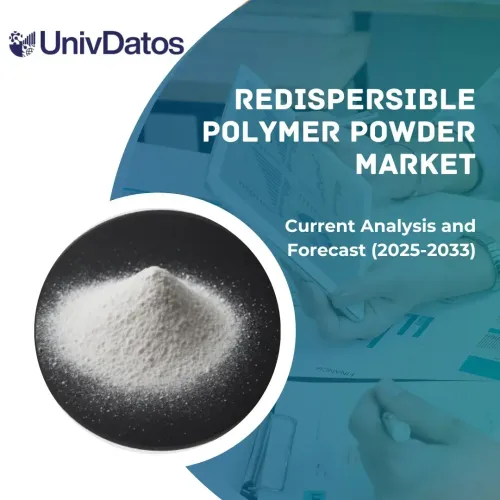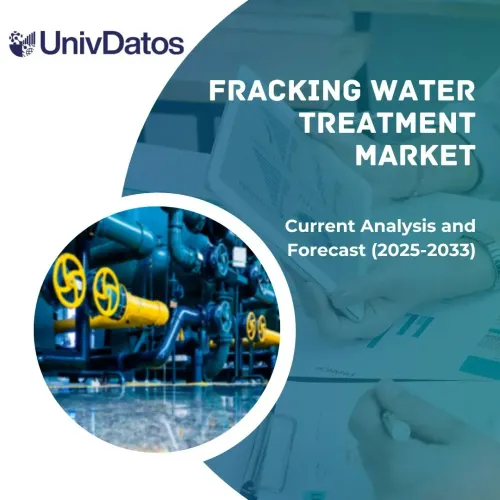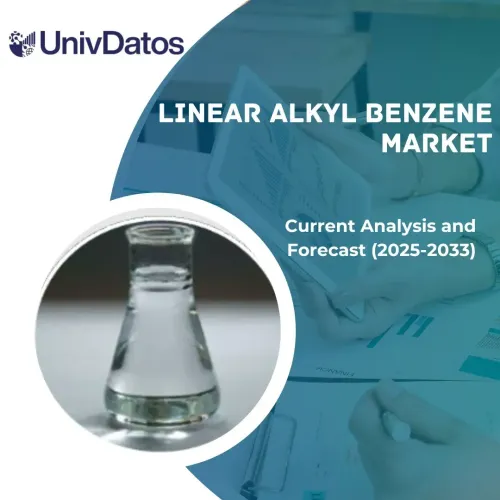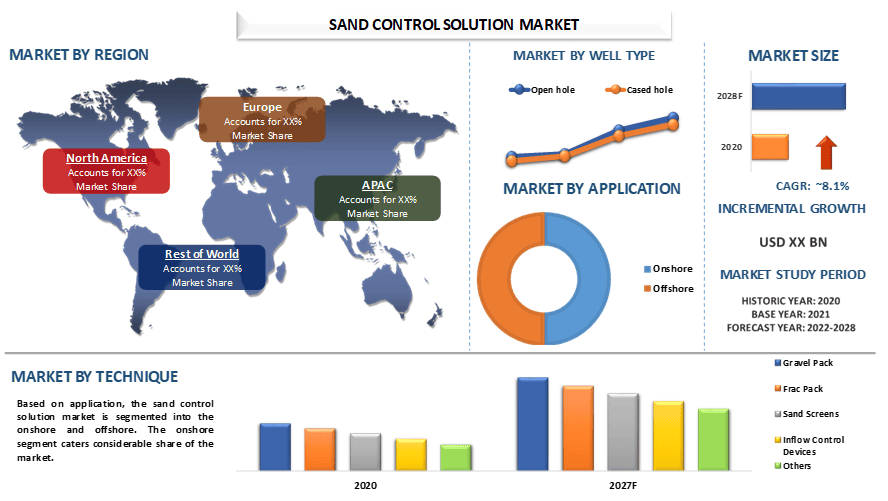
글로벌 샌드 제어 솔루션 시장은 예측 기간 동안 약 8.1%의 상당한 성장률을 보일 것으로 예상됩니다. 샌드 제어 솔루션은 금속 표면과 반응하여 높은 온도와 압력 환경에서 윤활 경계 조건 하에서 금속 표면의 마모를 방지하는 금속 표면 사이에 보호막을 형성하는 윤활제입니다. 샌드 제어 솔루션은 표면과 화학적으로 반응하여 낮은 전단 강도 코팅을 형성합니다.
또한 내마모성 첨가제는 일반적으로 낮은 하중과 높은 속도의 완만한 조건에서 연속적이고 적당한 마모율을 줄이기 위해 사용됩니다. 첨가제는 적용 표면을 코팅하여 시간이 지남에 따라 금속을 마모로부터 보호하는 데 도움이 됩니다. 특히 자동차 산업을 포함한 다양한 최종 사용자 산업에서 샌드 제어 솔루션에 대한 수요가 급증하는 것과 같은 요인들이 있습니다. 차량 수가 증가함에 따라 자동차 생산이 증가하면서 금속 표면 보호를 위해 기어박스를 광범위하게 소비하면서 시장 성장을 촉진하고 있습니다. 또한 자동차 생산 증가와 차량 수 증가가 결합되어 내마모성 첨가제 시장을 주도하는 핵심 요인입니다.
켐투라 코퍼레이션, 에보닉, 루브리졸, 인피늄, 쉐브론 오로나이트, 밴더빌트 케미칼, 텐헤 케미칼 그룹, 아프톤 케미칼 코퍼레이션, BASF, 크로다 인터내셔널.
보고서에 제시된 인사이트
“유정 유형 중 케이스 홀 범주가 예측 기간 동안 상당한 점유율을 차지할 것입니다.”
유정 유형에 따라 샌드 제어 솔루션 시장은 오픈 홀과 케이스 홀로 분류됩니다. 케이스 홀 부문은 시장의 상당한 점유율을 차지합니다. 케이스 홀 샌드 제어 방법은 홀의 안정성과 관련된 기술적인 이유로 인해 더 널리 사용됩니다. 케이스 홀 완결에서는 생산 케이싱이 저류지에 설치되어 안전한 생산 운영을 보장합니다. 또한 장벽 역할을 하여 고체, 원치 않는 유체 및 가스가 유정으로 유입되는 것을 방지합니다. 생산을 달성하기 위해 케이싱과 시멘트에 구멍을 뚫어 탄화수소가 유정 흐름으로 들어갈 수 있도록 합니다.
“응용 분야 중 육상 부문이 2020년 시장에서 상당한 점유율을 차지할 것입니다.”
응용 분야에 따라 샌드 제어 솔루션 시장은 육상과 해상으로 분류됩니다. 육상 부문은 시장의 상당한 점유율을 차지합니다. 자갈 팩은 주로 육상 위치에 설치됩니다. 육상 위치에는 추출 중 모래를 걸러내기 위해 유정에 이러한 시스템을 배치하는 것이 포함됩니다. 육상 응용 분야의 수요 증가는 분지에서 석유 생산량이 증가하고 있음을 보여줍니다. 이러한 요인들은 예측 기간 동안 육상 응용 분야에 대한 샌드 제어 솔루션 시장의 수요를 촉진할 것으로 예상됩니다.
“아시아 태평양이 시장에서 상당한 점유율을 차지할 것입니다.”
아시아 태평양은 예측 기간 동안 상당한 CAGR로 성장할 것으로 예상됩니다. 이는 주로 인도 및 중국과 같은 성장하는 경제에서 인구 증가와 급속한 산업화로 인해 이 지역에서 연료 수요가 증가하고 있기 때문입니다. 특히 호주, 인도네시아, 말레이시아 및 미얀마에서 시추 및 완결 활동의 증가는 예측 기간 동안 이 지역의 시장을 활성화할 가능성이 높습니다.
이 보고서를 구매해야 하는 이유:
- 이 연구에는 공인된 주요 업계 전문가가 검증한 시장 규모 측정 및 예측 분석이 포함됩니다.
- 이 보고서는 전체 산업 성과에 대한 간략한 개요를 한눈에 제공합니다.
- 이 보고서는 주요 비즈니스 재무, 제품 포트폴리오, 확장 전략 및 최근 개발에 중점을 두고 주요 산업 동료에 대한 심층 분석을 다룹니다.
- 산업에서 널리 퍼져 있는 동인, 제약, 주요 추세 및 기회에 대한 자세한 검토.
- 이 연구는 다양한 부문에 걸쳐 시장을 포괄적으로 다룹니다.
- 산업에 대한 심층적인 지역 수준 분석.
맞춤 설정 옵션:
글로벌 샌드 제어 솔루션 시장은 요구 사항 또는 기타 시장 부문에 따라 추가로 맞춤 설정할 수 있습니다. 이 외에도 UMI는 귀하가 고유한 비즈니스 요구 사항을 가지고 있음을 이해하고 있으므로 귀하의 요구 사항에 완전히 맞는 보고서를 얻기 위해 주저하지 말고 당사에 문의하십시오.
목차
샌드 제어 솔루션 시장 분석(2021-2027)을 위한 연구 방법론
글로벌 샌드 제어 솔루션 시장의 과거 시장 분석, 현재 시장 추정, 미래 시장 예측은 전 세계 주요 지역에서 샌드 제어 솔루션의 채택을 창출하고 분석하기 위해 수행된 세 가지 주요 단계였습니다. 과거 시장 수치를 수집하고 현재 시장 규모를 추정하기 위해 철저한 2차 연구가 수행되었습니다. 둘째, 이러한 통찰력을 검증하기 위해 수많은 결과 및 가정을 고려했습니다. 또한, 글로벌 샌드 제어 솔루션 시장의 가치 사슬 전반에 걸쳐 업계 전문가와 함께 철저한 1차 인터뷰도 진행했습니다. 1차 인터뷰를 통해 시장 수치를 가정하고 검증한 후, 전체 시장 규모를 예측하기 위해 하향식/상향식 접근 방식을 사용했습니다. 이후, 시장 세분화 및 데이터 삼각 측량 방법을 채택하여 산업 관련 세그먼트 및 하위 세그먼트의 시장 규모를 추정하고 분석했습니다. 자세한 방법론은 아래에 설명되어 있습니다.
과거 시장 규모 분석
1단계: 2차 출처 심층 연구:
연례 보고서 및 재무 제표, 실적 발표, 보도 자료 등과 같은 회사 내부 출처와 저널, 뉴스 및 기사, 정부 간행물, 경쟁사 간행물, 부문 보고서, 제3자 데이터베이스 및 기타 신뢰할 수 있는 간행물을 포함한 외부 출처를 통해 샌드 제어 솔루션 시장의 과거 시장 규모를 얻기 위해 자세한 2차 연구가 수행되었습니다.
2단계: 시장 세분화:
샌드 제어 솔루션 시장의 과거 시장 규모를 확보한 후, 주요 지역의 다양한 세그먼트 및 하위 세그먼트에 대한 과거 시장 통찰력과 점유율을 수집하기 위해 자세한 2차 분석을 수행했습니다. 주요 세그먼트에는 유정 유형, 기술 및 응용 분야가 보고서에 포함되어 있습니다. 또한 해당 지역에서 테스트 모델의 전반적인 채택을 평가하기 위해 국가 수준 분석을 수행했습니다.
3단계: 요인 분석:
다양한 세그먼트 및 하위 세그먼트의 과거 시장 규모를 확보한 후, 샌드 제어 솔루션 시장의 현재 시장 규모를 추정하기 위해 자세한 요인 분석을 수행했습니다. 또한 다양한 유정 유형, 기술 및 응용 분야와 같은 종속 및 독립 변수를 사용하여 요인 분석을 수행했습니다. 전 세계 샌드 제어 솔루션 시장 부문에서 최고의 파트너십, 인수 합병, 사업 확장 및 제품 출시를 고려하여 수요 및 공급 측면 시나리오에 대한 철저한 분석이 수행되었습니다.
현재 시장 규모 추정 및 예측
현재 시장 규모 측정: 위의 3단계의 실행 가능한 통찰력을 기반으로 현재 시장 규모, 글로벌 샌드 제어 솔루션 시장의 주요 업체 및 세그먼트의 시장 점유율을 도출했습니다. 필요한 모든 비율 점유율 분할 및 시장 분석은 위에 언급된 2차 접근 방식을 사용하여 결정되었으며 1차 인터뷰를 통해 확인되었습니다.
추정 및 예측: 시장 추정 및 예측을 위해 이해 관계자에게 제공되는 동인 및 추세, 제약 및 기회를 포함한 다양한 요인에 가중치가 할당되었습니다. 이러한 요인을 분석한 후 관련 예측 기술, 즉 하향식/상향식 접근 방식을 적용하여 전 세계 주요 시장에서 다양한 세그먼트 및 하위 세그먼트에 대한 2027년 시장 예측을 도출했습니다. 시장 규모를 추정하기 위해 채택된 연구 방법론은 다음과 같습니다.
- 주요 국내 시장에서 수익(USD) 측면의 산업 시장 규모와 샌드 제어 솔루션 시장의 채택률
- 시장 세그먼트 및 하위 세그먼트의 모든 비율 점유율, 분할 및 분석
- 제공되는 제품 측면에서 글로벌 샌드 제어 솔루션 시장의 주요 업체. 또한 빠르게 성장하는 시장에서 경쟁하기 위해 이러한 업체가 채택한 성장 전략
시장 규모 및 점유율 검증
1차 연구: 주요 지역 전반에 걸쳐 최고 경영진(CXO/VP, 영업 책임자, 마케팅 책임자, 운영 책임자, 지역 책임자, 국가 책임자 등)을 포함한 핵심 오피니언 리더(KOL)와 심층 인터뷰를 진행했습니다. 그런 다음 1차 연구 결과를 요약하고 명시된 가설을 입증하기 위해 통계 분석을 수행했습니다. 1차 연구의 입력은 2차 결과와 통합되어 정보를 실행 가능한 통찰력으로 전환했습니다.
다양한 지역의 1차 참가자 분할
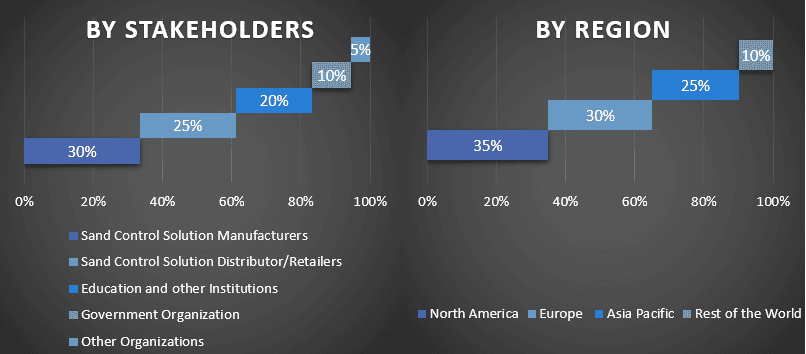
시장 엔지니어링
데이터 삼각 측량 기술을 사용하여 전체 시장 추정을 완료하고 글로벌 샌드 제어 솔루션 시장의 각 세그먼트 및 하위 세그먼트에 대한 정확한 통계 수치를 도출했습니다. 글로벌 샌드 제어 솔루션 시장에서 유정 유형, 기술 및 응용 분야의 다양한 매개변수와 추세를 연구한 후 데이터를 여러 세그먼트 및 하위 세그먼트로 분할했습니다.
글로벌 샌드 제어 솔루션 시장 조사의 주요 목표
글로벌 샌드 제어 솔루션 시장의 현재 및 미래 시장 동향이 연구에서 정확히 지적되었습니다. 투자자는 연구에서 수행된 정성적 및 정량적 분석에 대한 재량권을 기반으로 투자에 대한 전략적 통찰력을 얻을 수 있습니다. 현재 및 미래 시장 동향은 지역 수준에서 시장의 전반적인 매력을 결정하여 산업 참여자가 최초 진출자 이점으로부터 이익을 얻기 위해 미개척 시장을 활용할 수 있는 플랫폼을 제공했습니다. 연구의 다른 정량적 목표는 다음과 같습니다.
- 가치(USD) 측면에서 샌드 제어 솔루션 시장의 현재 및 예측 시장 규모를 분석합니다. 또한 다양한 세그먼트 및 하위 세그먼트의 현재 및 예측 시장 규모를 분석합니다.
- 연구의 세그먼트에는 유정 유형, 기술 및 응용 분야의 유형 영역이 포함됩니다.
- 샌드 제어 솔루션에 대한 규제 프레임워크 정의 및 분석
- 다양한 중개인의 존재와 관련된 가치 사슬을 분석하고 산업의 고객 및 경쟁업체 행동을 분석합니다.
- 주요 지역에 대한 샌드 제어 솔루션 시장의 현재 및 예측 시장 규모를 분석합니다.
- 보고서에서 연구된 지역의 주요 국가에는 아시아 태평양, 유럽, 북미 및 기타 지역이 포함됩니다.
- 샌드 제어 솔루션 시장의 회사 프로필과 빠르게 성장하는 시장에서 지속하기 위해 시장 참여자가 채택한 성장 전략
- 산업의 심층적인 지역 수준 분석
관련 보고서
이 상품을 구매한 고객님들도 함께 구매하신 상품


